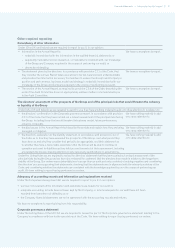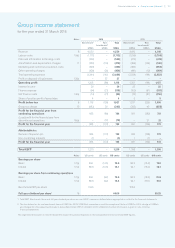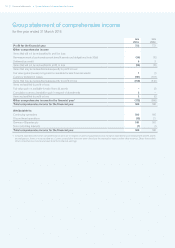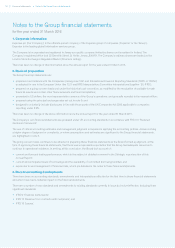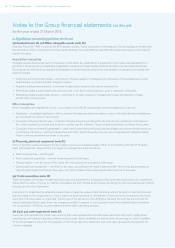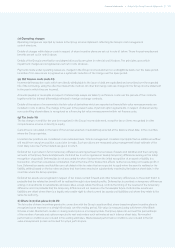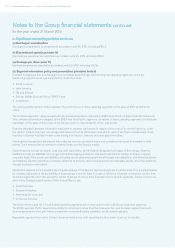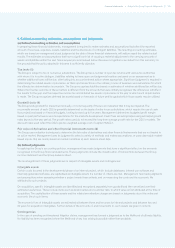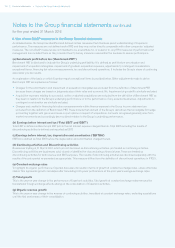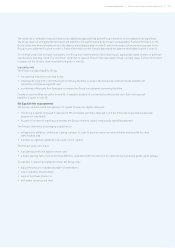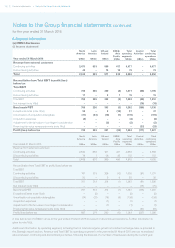Experian 2016 Annual Report Download - page 123
Download and view the complete annual report
Please find page 123 of the 2016 Experian annual report below. You can navigate through the pages in the report by either clicking on the pages listed below, or by using the keyword search tool below to find specific information within the annual report.
121•Notes to the Group nancial statementsFinancial statements
(i) Financial assets and derivative financial instruments (note 27)
The Group classifies its financial assets into four categories:
• Loans and receivables – comprising trade and other receivables and cash and cash equivalents.
• Derivatives used for hedging – including interest rate swaps, cross currency swaps, foreign exchange contracts and
equity swaps.
• Assets at fair value through profit and loss – comprising non-hedging derivative financial instruments.
• Available-for-sale financial assets – being non-derivative financial assets either designated to this category or not classified
in the other financial asset categories.
The Group uses derivative financial instruments to manage its exposures to fluctuations in foreign exchange rates, interest rates
and certain obligations relating to share incentive plans, including social security obligations. Instruments used include interest
rate swaps, cross currency swaps, foreign exchange contracts and equity swaps. These are recognised as assets or liabilities as
appropriate and are classified as non-current, unless they mature within one year of the balance sheet date.
Derivatives are initially recognised at their fair value on the date the contract is entered into, and are subsequently remeasured at
their fair value. The method of recognising the resulting gain or loss depends on whether the derivative is designated as a hedging
instrument and, if so, the nature of the hedge relationship.
Hedging derivatives
The Group designates certain derivatives as fair value hedges, which are hedges of the fair value of a recognised asset or liability
or a firm commitment. The Group does not currently enter into cash flow or net investment hedges.
The Group documents the relationship between hedging instrument and hedged item at the hedge inception, and its risk
management objective and strategy for undertaking hedge transactions. The Group also documents its assessment of whether the
derivatives used in hedging transactions are highly effective in offsetting changes in fair values of hedged items. This effectiveness
testing is performed at every reporting date throughout the life of the hedge to confirm that the hedge remains, and will continue to
remain, highly effective. Hedge accounting is discontinued when the hedging instrument expires, is sold, terminated or exercised,
or no longer qualifies for hedge accounting.
Changes in the fair value of derivatives that are designated and qualify as fair value hedging instruments are recognised in the Group
income statement, together with any changes in the fair value of the hedged asset or liability that are attributable to the hedged risk.
The ineffective portion of a fair value hedge is recognised in net finance costs in the Group income statement.
Non-hedging derivatives
Changes in the fair value of such derivative instruments are recognised immediately in the Group income statement. Cost and
income amounts in respect of derivatives entered into in connection with social security obligations on employee share incentive
plans, other than amounts of a financing nature, are charged or credited within labour costs. Other costs and changes in the fair
value of such derivatives are charged or credited within financing fair value remeasurements in the Group income statement.
(j) Borrowings (note 25)
Borrowings are recognised initially at fair value, net of any transaction costs incurred. Borrowings are subsequently stated at
amortised cost, except where they are hedged by an effective fair value hedge, in which case the carrying value is adjusted to
reflect the fair value movements associated with the hedged risk.
Borrowings are classified as non-current to the extent that the Group has an unconditional right to defer settlement of the liability
for at least one year after the balance sheet date.
(k) Trade payables (note 24)
Trade payables are recognised initially at fair value. Where the time value of money is material, payables are then carried at
amortised cost using the effective interest rate method.


